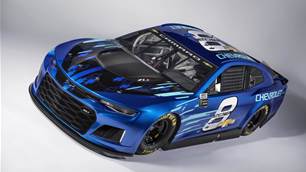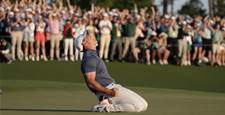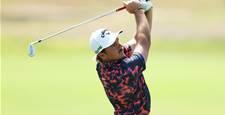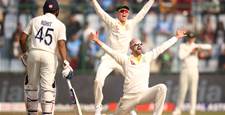NASCAR’s main game requires the same levels of skill, stamina and perseverance as any world-class racer,
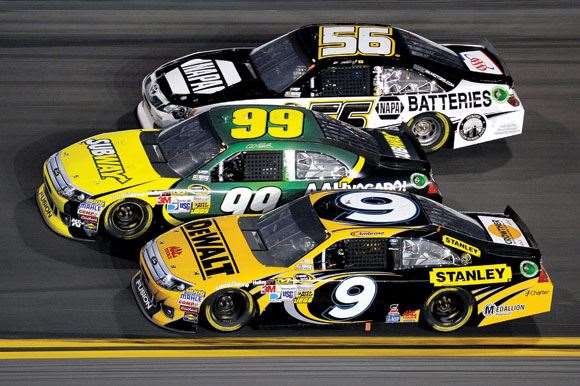 photos by Getty Images
photos by Getty ImagesNASCAR’s main game requires the same levels of skill, stamina and perseverance as any world-class racer;
When “big tobacco” sponsorships went up in smoke in 2006, Formula One’s Bernie Ecclestone turned to the big end of town, certain that the national prestige of hosting a Grand Prix would provide the necessary support. On the other side of the Atlantic, NASCAR’s Bill France Jr went strictly retail; soap powders, supermarkets, beer and breakfast cereals supplemented the perennial list of oil and fuel sponsors to extend his empire. Even the local hamburger joint wasn’t immune.
Like an ever-expanding shopping mall, NASCAR has extended its reach into Canada and Mexico, yet remains rooted in the deep south of the USA, where the good ol’ boys discovered there was a bigger buck to be made in stock car racing than outrunning the Internal Revenue Service delivering illegal corn whisky. A sometime racer himself, Bill France Sr had been a fast enough spruiker to convince Daytona’s city fathers to fund a two-and-a-half-mile super speedway. Nominating the oval as the “World Centre of Racing” was pure hyperbole, but 50 years on, Daytona now has the same level of recognition as Monaco, LeMans, Monza and Indianapolis.
Today, any driver who manages to graduate into NASCAR’s main game requires the same levels of skill, stamina and perseverance as any world-class racer, be it touring cars, sport cars or open wheelers; yet outside the USA, NASCAR is little- understood, seldom appreciated and often disparaged as “the turn left brigade” performing in a circus. The reality is, NASCAR drivers have acquired the exceptionally precise skills and (often misplaced) faith in their fellow gladiators to manoeuvre overpowered and under-tyred 1800kg lumps of metal at speeds up to 400km/h, separated by no more than a slip of Sorbent back, front and often both sides. Finishing first is best, but NASCAR’s spread of winnings – where a victory may net as much as $1.5 million and a last place DNF $250,000 – acknowledges there’s no show without a full cast.
Believing a promoter’s hype about the numbers generated by their sport is akin to buying stock on the tip of a Wall Street broker you’ve just met at the bar. However, Fox Sports recently renewed an eight-year $1.8 billion deal for the NASCAR TV rights. Add to this the sport’s claim of six million spectators over a season, plus the millions the car manufacturers and sponsors pump unto the show, and there’s an arguable claim that NASCAR generates as much money as Formula One. (Money that passes through more hands than it does in Bernie Ecclestone’s fiefdom.) And, in a world where playing poker has become a sport, it’s often claimed NASCAR has mismanaged the circus in an attempt to build TV ratings. This may be so ‒ just don’t try to convince the driver who, suffering from major fluid loss, stomach cramps and arm pump, made a miniscule miscalculation and dropped six places in the last 90 seconds of a tough three-hour event. He was racing.
Contrary to the criticism of oval racing, there have been a number of all-American heroes who’ve bested the world’s best – Mario Andretti, AJ Foyt and Dan Gurney to name a few. Of the Euro set, no driver – with the single exception of Juan Pablo Montoya – has made a serious attempt to tackle the Americans on their home turf. And when Montoya made the move, it was seen as akin to Pavarotti joining the “Grand Ole Opry”.
Launceston’s Marcos Ambrose isn’t the first Australian to step through the portal into the parallel world of NASCAR. Back in the 1960s, talented race car engineer and occasional Formula One driver, Frank Gardner, made an appearance at Rockingham and, some years later, Queensland’s laconic Dick Johnson punted a Ford around a number of NASCAR’s road circuits until he short-circuited the live TV broadcast by dropping a magic word when he hit the Armco – a hanging offence in family-values NASCAR. But Ambrose is the first Australian and, along with Montoya, just the second “furriner” to attempt to build a career in this peculiarly American sport.
In what must’ve been a humbling experience for the former European Formula Ford and dual V8 Supercar champion, Ambrose was at first denied a start at Daytona until he’d proven his competency on lesser speedways. After five years paying his dues in NASCAR’s “feeder” series, Ambrose proved his on-track abilities and, just as critically, displayed he could fit into the NASCAR mould ... mostly by not standing out. Not yet anyway. And when he recently signed a multiyear contract with Richard Petty Motorsports, he was embraced by the most revered and most fiercely competitive family in NASCAR’s history. Patriarch Lee Petty won the very first Daytona 500 and his son Richard went on to a record 200 NASCAR victories – seven of which were at Daytona. The next two Petty generations also compete, but the team is looking to Ambrose and his team-mate, Aric Almirola, to add to the combine’s impressive record ... and the vast quantities of team merchandise being sold.
Related Articles
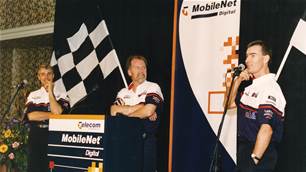
The Thing About Golf Podcast #93 – Tomas Mezera
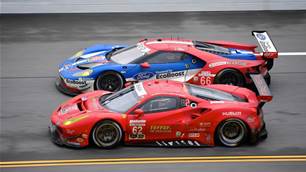
Pic gallery: Daytona 24 Hour
